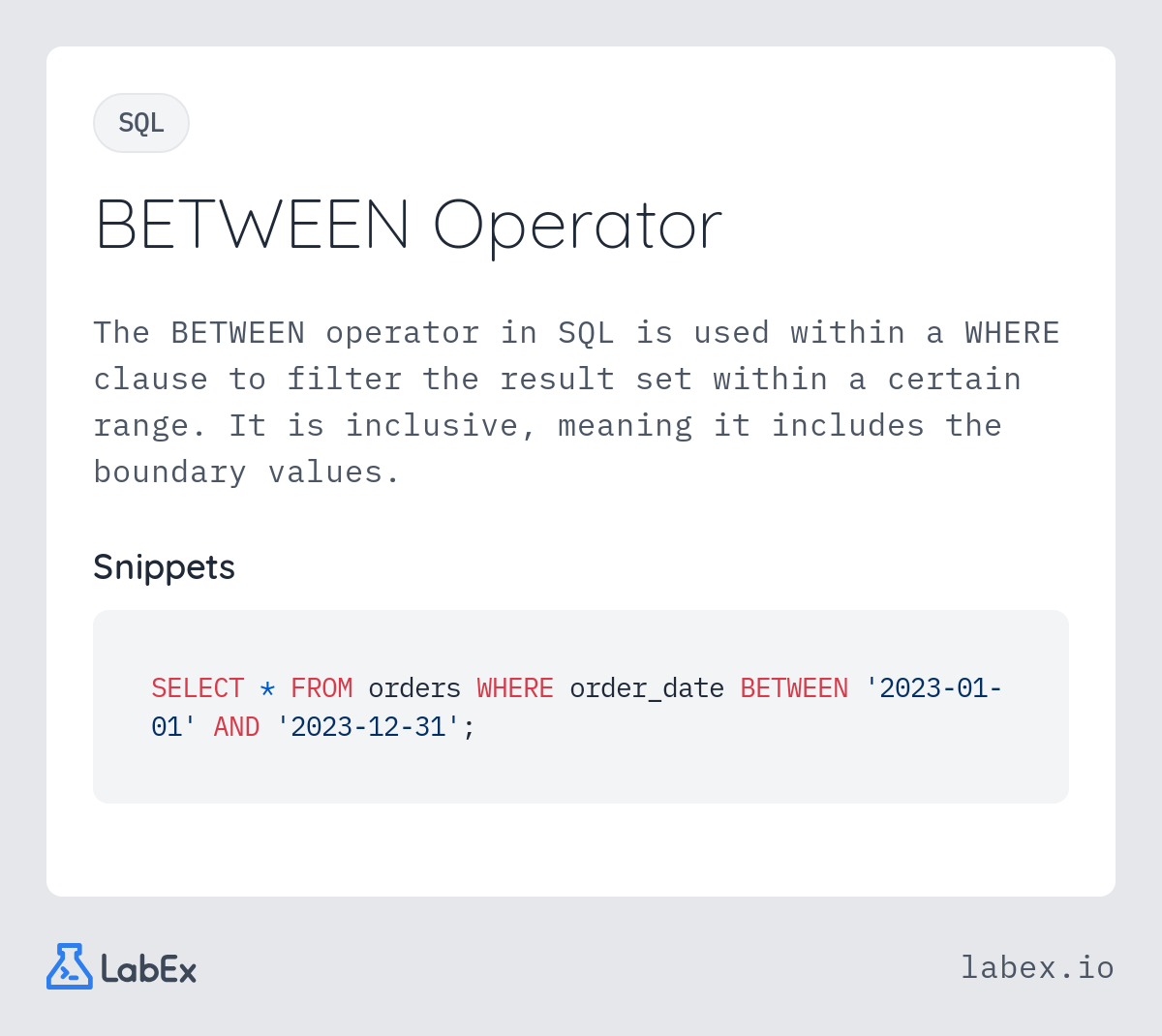
BETWEEN Operator
The BETWEEN operator in SQL is used within a WHERE clause to filter the result set within a certain range. It is inclusive, meaning it includes the boundary values.
Explore our curated collection of programming flashcards. Each card contains practical examples and code snippets to help you master programming concepts quickly.